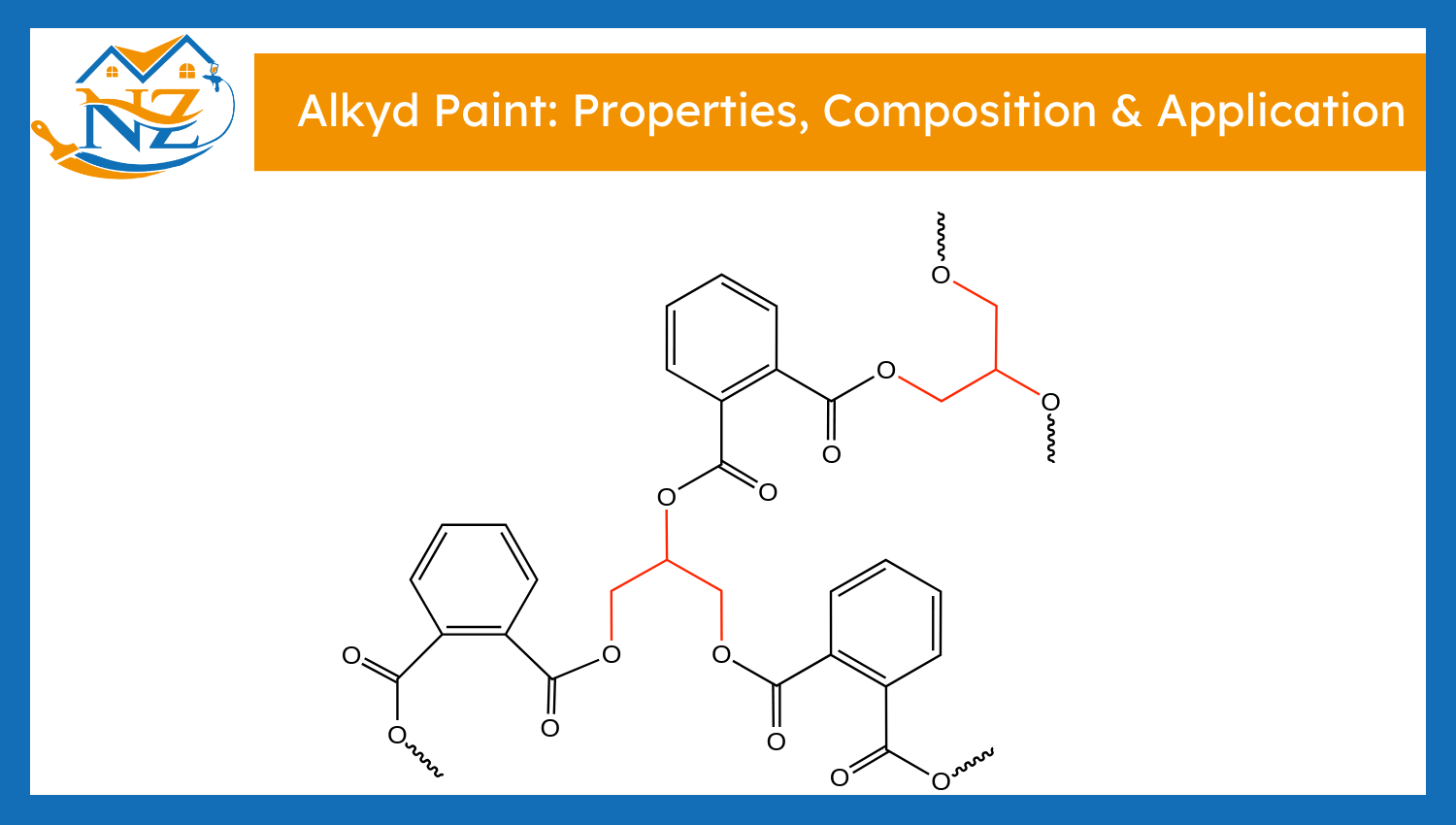

Alkyd paint is an oil based coating, used for durability, a glossy look and a smooth finish. It is made from resins as a binder. It is a modified polyester that gets dissolved in organic solvents. Residential and industrial painting mostly prefer alkyd painting. It offers a hard-wearing surface, ideal for wood and metal.
According to a 2009 study by Amirkabir University of Technology from the Department of Polymer Engineering, modified alkyd resins provide higher surface hardness and hydrolytic resistance. These properties make alkyds more reliable in industrial environments where durability and moisture protection are critical. Their resistance to heat, chemicals, and heavy handling makes them a preferred water-based alternative.
Alkyd paints work in decorative and protective coatings. They’re used on trims, moldings, pipelines, tools, and storage tanks. Their compatibility with primers and corrosion-resistant coatings allows flexible layering. They perform well in fluctuating temperatures and moisture with proper surface prep.
| Property | Description |
|---|---|
| Base | Oil-modified synthetic resin (alkyd resin), typically solvent-based |
| Finish | Available in satin, semi-gloss, and high-gloss finishes |
| Drying Time | Slower drying — touch dry in 6–8 hours, full cure in 24+ hours |
| Durability | Very durable — resists wear, stains, and cleaning |
| Adhesion | Excellent adhesion to wood, metal, and primed surfaces |
| Brushability | Smooth application with fewer brush marks — levels well |
| Surface Tolerance | Works well on less-than-perfect surfaces (e.g., old walls or wood) |
| Clean-up | Requires mineral spirits or paint thinner |
| Odor & VOCs | Stronger odor and higher VOC levels compared to water-based paints |
| Color Retention | Good color retention, but may yellow slightly over time (especially in low light) |
| Gloss Retention | Maintains sheen longer than many water-based paints |
Here are the four main components of alkyd paint:
Here are the four common applications of alkyd paint:
Alkyd paint has several benefits like durability, smooth levelling, protection for high-touch surfaces and more. Here are 5 key advantages of using it:
Alkyd paint has great advantages but some limitations too. Here are five of them:
| Color | Visual Appeal | Common Uses |
|---|---|---|
| Classic White | Bright, clean, and timeless | Trim, doors, cabinets, and ceilings |
| Charcoal Gray | Deep gray with sophisticated tone | Kitchen cabinets, interior doors, exterior accents |
| Navy Blue | Bold and traditional | Accent walls, built-ins, front doors |
| Rich Black | High-impact, modern matte or gloss | Interior/exterior doors, window frames, furniture |
| Warm Taupe | Neutral, earthy undertones | Living rooms, cabinetry, commercial interiors |
| Hunter Green | Dark green with vintage charm | Dining rooms, exterior shutters, library walls |
| Deep Burgundy | Luxurious red with brown undertones | Accent walls, traditional kitchens, statement pieces |
| Sand Beige | Light, warm, and calming | Living spaces, retail interiors, exteriors |
| Steel Blue | Cool, modern blue-gray | Cabinets, offices, minimalist interiors |
| Ivory Cream | Soft, warm off-white | Kitchens, trim, bedrooms, and vintage decor |
Alkyd paint performs best with proper tools and application techniques. Here are the major steps to apply it: